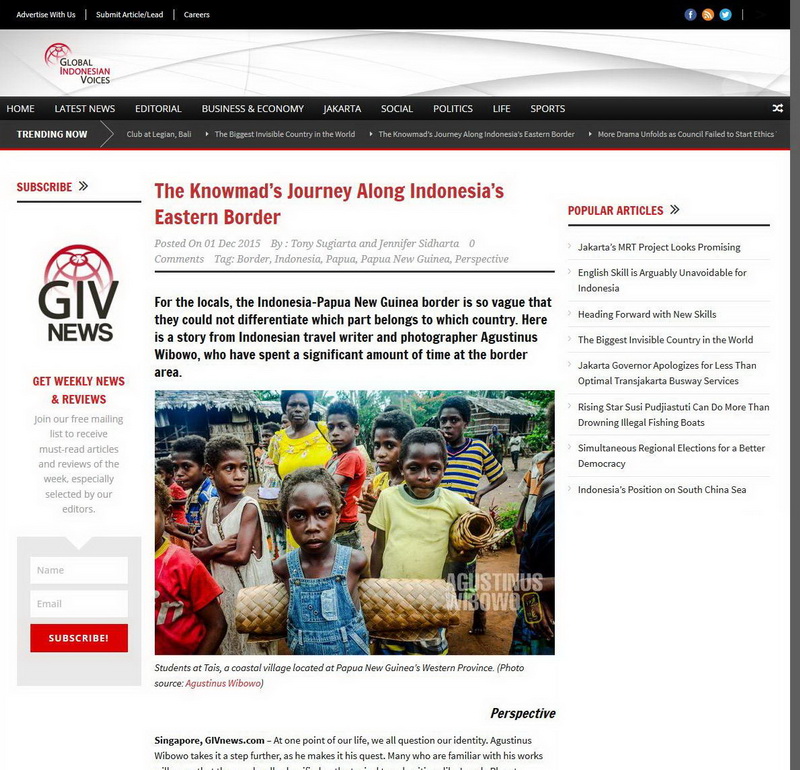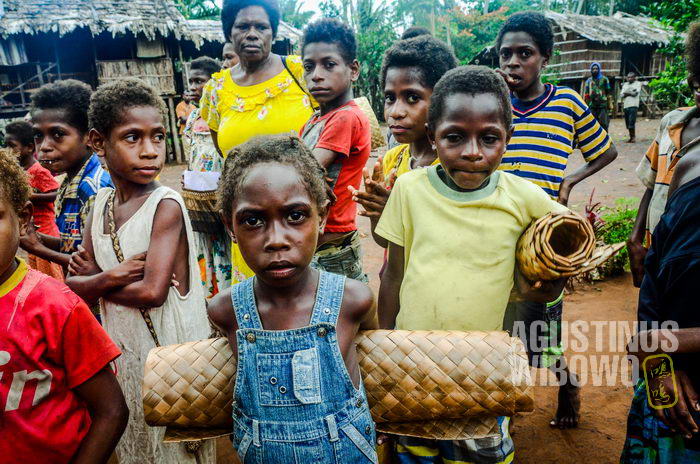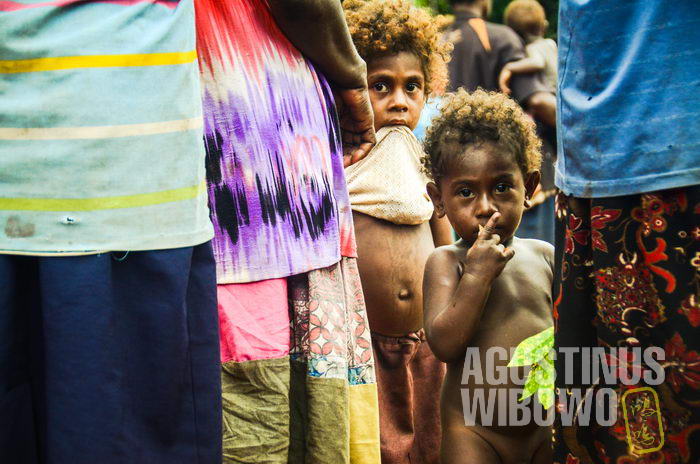[GIV]: The Knowmad’s Journey Along Indonesia’s Eastern Border

For the locals, the Indonesia-Papua New Guinea border is so vague that they could not differentiate which part belongs to which country. Here is a story from Indonesian travel writer and photographer Agustinus Wibowo, who have spent a significant amount of time at the border area.

Students at Tais, a coastal village located at Papua New Guinea’s Western Province. (Photo source: Agustinus Wibowo)
Perspective
Singapore, GIVnews.com – At one point of our life, we all question our identity. Agustinus Wibowo takes it a step further, as he makes it his quest. Many who are familiar with his works will agree that they are hardly classified as the typical travel writings like Lonely Planet guidebooks or reviews of glamourous hotels and establishments.
Instead, Agustinus travels to contemplate intrapersonal conflicts and writes about them, taking readers along to experience his physical and mental tribulations.
No doubt, he is a great storyteller and in Singapore, GIV had the privilege to sit down and listen to his adventure in Papua New Guinea, Indonesia’s closest, yet the furthest, neighbour.
“So how can they survive? So this is the reason of the anger. The injustice, economic wise, the opportunity to survive, is very unjust.”
Papua New Guinea or Papua Province?
Despite being neighbours, citizens of both Indonesia and Papua New Guinea know near to nothing about each other. When Agustinus was in Papua New Guinea, he was asked, “How is life in Indonesia as a communist country?”
He finds the borders intriguing, as it is created neither by Indonesia nor Papua New Guinea, but by another country during the colonization era.
“It is interesting to see how a straight and artificial line like this separates people from both sides,” said the writer. This triggers him to go and to explore along the line.
“In reality, the line does not exist: we cannot see the line as it is deep in the jungle,” Agustinus shared to GIV.
So, he went to the Western Province, the most isolated area in Papua New Guinea. Agustinus hitchhiked canoe, and travel along the river. There are not many public transportations in that country, so he waited at each village for a fisherman to come and hitchhiked in his canoe.
“All along 400 km of river, and it took me one and a half months,” he stated. The road on Indonesia’s side of border is more efficient and will only take eight hours. He mentioned it as one of the highlights of his journey, as he may be the first foreigner who hitchhiked canoe.
The knowmad told GIV that one of the most interesting part of his journey was staying with the OPM (Organisasi Papua Merdeka or Free Papua Organization; people of Indonesia’s Papua who fight against the government of Indonesia for their freedom) rebels.
According to Agustinus, Indonesians referred to them as refugees, but actually many of those people migrated from Indonesia’s Papua to Papua New Guinea as part of their struggle against Indonesia’s central government.
“These people are forgotten. Nobody writes about their struggle. Nobody covers them. And they are full of fear of Indonesia and Indonesians so it was quite hard for me to get accepted by the people,” recounted the travel writer, mentioning that he eventually stayed with them at their camps.
Many of the OPM camps are located in the southern area of Indonesia’s border but they are hard to reach from the populated part of Indonesia. If you go there from Papua New Guinea, you need to cross three rivers; but from Indonesia’s side, you have to cross five deep rivers.
For the locals, the border itself is so vague that they could not differentiate which part belongs to which country. There is even a village of OPM members, with facilities such as schools, that was built on Indonesia’s land, but they put Papua New Guinea’s flag and the people go to Papua New Guinea’s market; because they did not realize that they are on Indonesia’s territory.
“Nobody knows where the border is,” emphasized Agustinus. He also explained the story of OPM people.
“These people are the children of people who are struggling. In the 1984, they moved to Papua New Guinea,” said the knowmad.
But that generation passed away and their children did not know about the struggle.

“What will be their future?” Agustinus wonders while taking this photograph at Tais in Papua New Guinea. (Photo source: Agustinus Wibowo)
Cultural Destruction and Responsible Travel
It was indeed a compelling story and a thrilling journey but do not pack your bag just yet, Agustinus may advise. Responsible travel is more important than the quantity of travelers, said the travel writer and photographer.
“Many places in Papua have been destroyed culturally by visitors, by outsiders especially,” he stated.
“I started to understand about OPM struggle after I live with them,” he added. After crossing the border from Papua New Guinea to Papua province (on the Indonesian side), within 30 km, you do not experience Papua or see the local Papuans anymore. You see mainly Javanese people, speaking Javanese, opening Javanese restaurants.
“Now many cities are drowned by outsiders. If you go to Merauke (the most Eastern outer part of Indonesia in Papua), about 80 percent are outsiders.”
Although, on the contrary, the more foreign culture has positive contribution where local Papuans pick up technology from them, evident from their ways of living. He noticed that the ways of cooking are different and food are more delicious on the Indonesian side of Papua.
Generally, Papua is less developed than other parts of Indonesia. The people in Papua are still living quite traditionally as compared to, for example, those in Java. So, as Agustinus put it, “How can these people compete with the outsiders?”
When these outsiders migrate to Papua, they prefer to hire outsiders as they are more educated and have more relevant working experiences. It causes inequality as Indonesians of other ethnic groups may find job anywhere in Indonesia while people of Papua is being discriminated.
“So how can they survive? So this is the reason of the anger. The injustice, economic wise, the opportunity to survive, is very unjust.”
However, Agustinus does not mean to discourage people from visiting Papua. “I encourage people (to travel) of course, when they are responsible to society, they respect the culture,” he argued.
The thing is, when some places in Indonesia open up to tourism, they offer their tribal culture and primitiveness, and yet some tourists may exploit and may not be responsible enough to respect the locals as fellow human beings.
“This is reducing the value of their culture, reducing the value of their humanity,” he urged travelers to treat local as how they would like to be treated, with dignity and respect.






Leave a comment